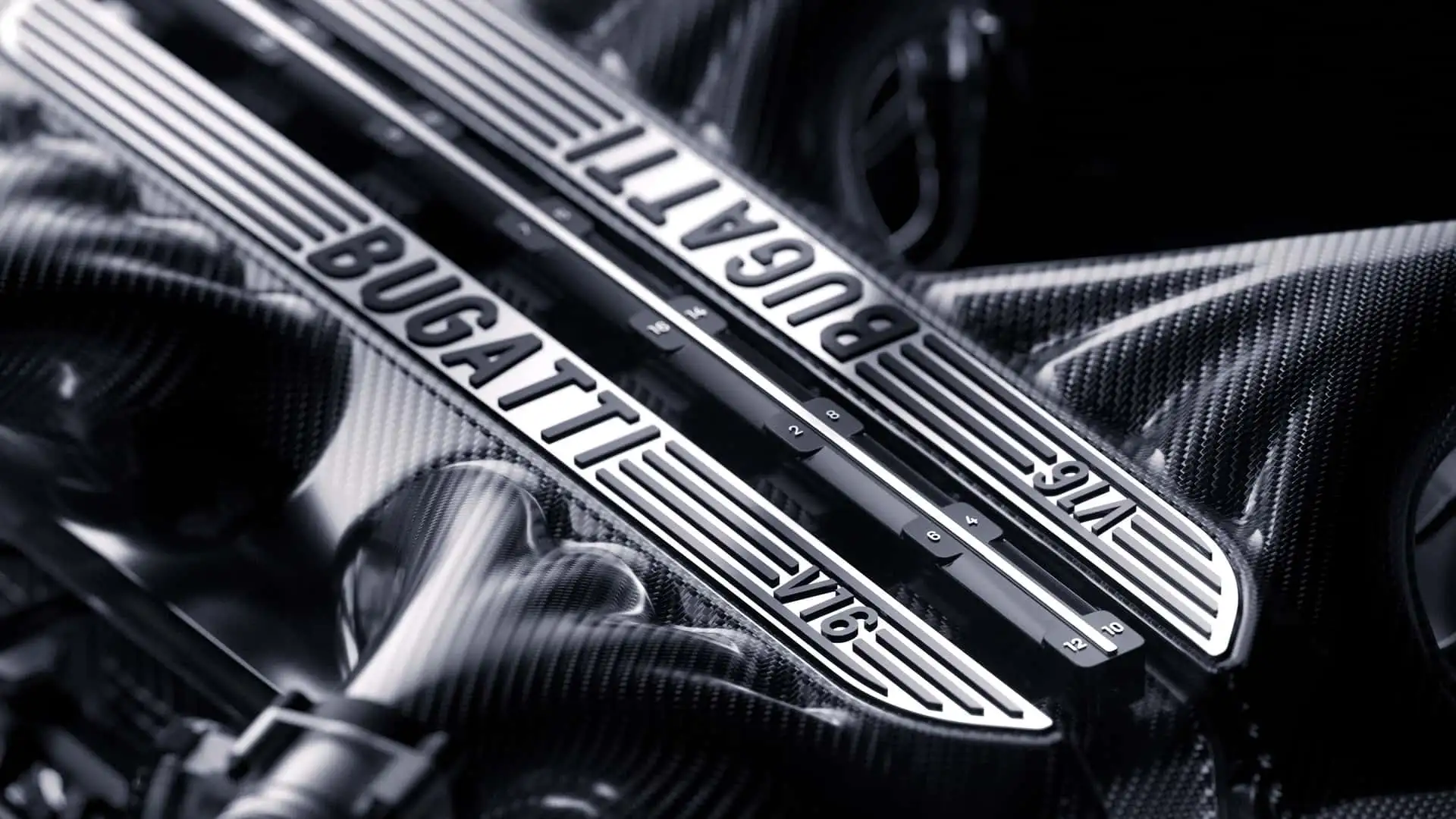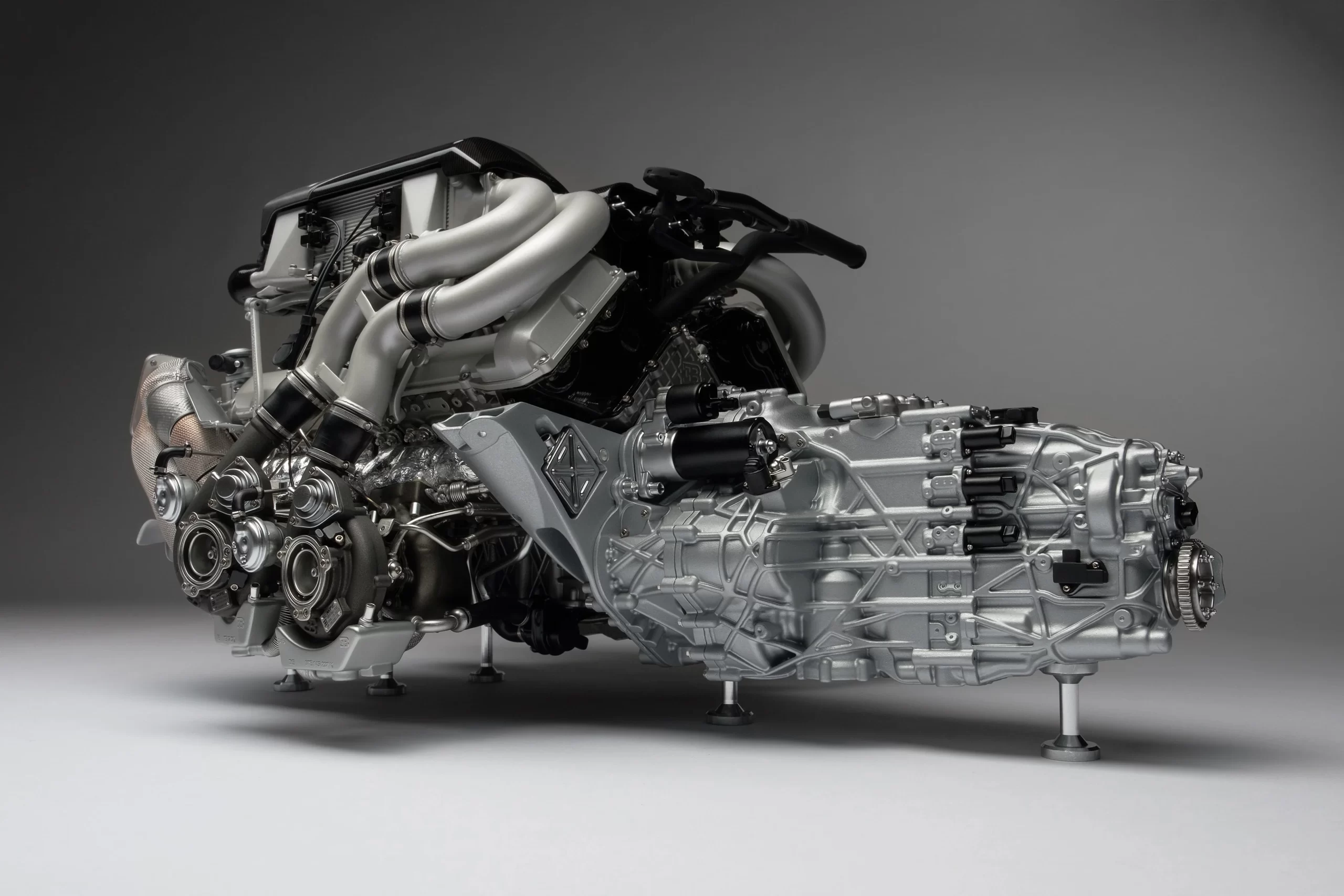In an era where the automotive landscape is dominated by electric powertrains and downsized engines, Bugatti’s announcement regarding the successor to the Chiron came as a surprise: it will feature a hybridized V16 engine.
Speculation had abounded for years, with many anticipating a V8 or V10, but the revelation of a V16 arrangement from the French marque caught many off guard.
Such powerplants are a rarity in the modern automotive world, with production V16 models primarily confined to the pre-World War II era. If Bugatti successfully executes this feat, it will mark the first post-war series production 16-cylinder engine, a testament to the brand’s pioneering spirit akin to its iconic predecessors, the Veyron and the Chiron.
Taking a closer look at the historical context, series production V16 cars have been exceedingly scarce. Only three such models have graced the automotive landscape, with two originating from Cadillac.
The 1930 Cadillac Series 452, equipped with a 7.4-liter V16, and the 1931 Mormon Sixteen, featuring an 8.0-liter V16, are notable examples of this exclusive lineage. Later, in 1938, Cadillac introduced the Series 90 with a 7.1-liter V16 powerplant, albeit in limited numbers.

Moving into the realm of prototypes and concept cars, the modern resurgence of the V16 concept can be traced back to BMW’s experimental endeavors in 1988, followed by Mercedes-Benz’s speculative exploration of an 8.0-liter W16 engine.
Notably, Cadillac made headlines in 2003 with the unveiling of the Cadillac Sixteen concept, boasting a formidable 13.6-liter V16 engine. Despite these ambitious ventures, practical constraints such as cost, servicing complexities, and packaging limitations have deterred the widespread adoption of V16 powertrains in production vehicles.
However, Bugatti appears poised to overcome these challenges. Catering exclusively to a clientele of affluent individuals, Bugatti’s customer base is uniquely positioned to accommodate the extravagant costs associated with V16 engines.
Moreover, the brand’s manufacturing capabilities and penchant for innovation provide a conducive environment for engineering bespoke solutions, further facilitating the realization of its ambitious vision.
As the automotive industry continues its evolution towards electrification, Bugatti’s bold stance underscores the enduring relevance of internal combustion engines.
The juxtaposition of the ultimate electric hypercar from Rimac, Bugatti’s partner, with the forthcoming V16-powered successor to the Chiron signifies a harmonious coexistence of traditional and modern propulsion technologies.
In essence, Bugatti’s pursuit of the V16 engine serves as a beacon of inspiration, setting a precedent for innovation and pushing the boundaries of automotive engineering.
While these groundbreaking vehicles may remain beyond the reach of most, their symbolic significance resonates throughout the industry, shaping the trajectory of future advancements and reaffirming the timeless allure of internal combustion powerplants.
Also read: Qatari Prince K.H.K Spotted in $3.9M Bugatti Chiron Super Sport 300+ Leaving Palace

